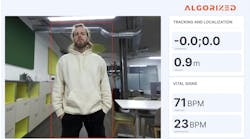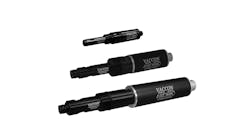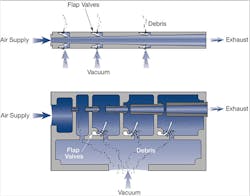If you’re having issues with your venturi vacuum pump clogging, it may be because you’re using multi-stage pumps that are really not designed for dirty environments.
Vacuum pumps, by their nature, use available atmospheric air to create vacuum flow. Any debris, dirt and or/ dust in the air, will be drawn into the vacuum flow of the pump. Whatever your application, vacuum pumps should always operate at peak performance. But if vacuum filters or screens clog, performance is degraded, causing downtime and increasing costs.
This is liable to happen with the use of multi-stage vacuum pumps which, despite offering higher flow at lower vacuum level, are compromised by a design limitation: the use of flap valves to hold the vacuum level for each stage. These flap valves may get stuck open because of ingested debris.
To protect the flap valves, an intake filter is required. The intake filter itself must be cleaned or will become clogged, causing a loss of vacuum flow. When that occurs, production must stop until maintenance is performed and/or a replacement found for the intake filter and/or the flap valve. The consequence: downtime, increased operating expenses, maintenance and replacement costs.
A better alternative exists in the form of non-clogging single-stage vacuum pumps built with a flow through design to generate high internal velocities that carry dirt through and out of the vacuum pump. This flow through design eliminates the need for filters and screens. In addition, because most of the work performed by vacuum pumps is done above 9 inches HG (305 mbar), a single-stage venturi will have higher vacuum flow rates than multi-stage pumps in the working vacuum ranges.
So, whether your application is carton erecting, pet food bagging or feeding die-slick coated sheet metal into a press, you may want to take a closer look at filter-free, non-clogging single stage vacuum pumps.











